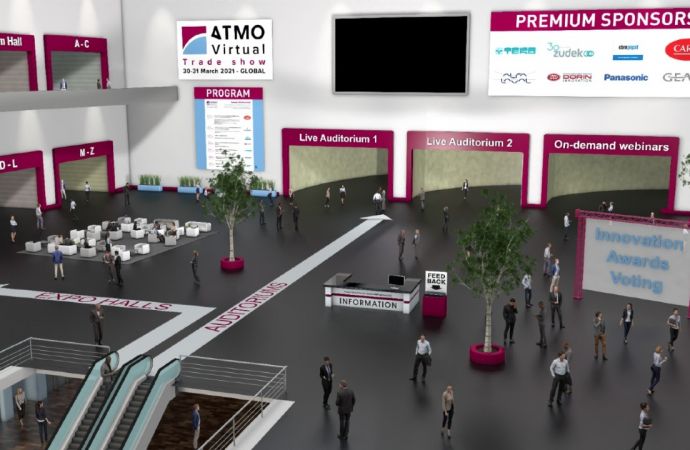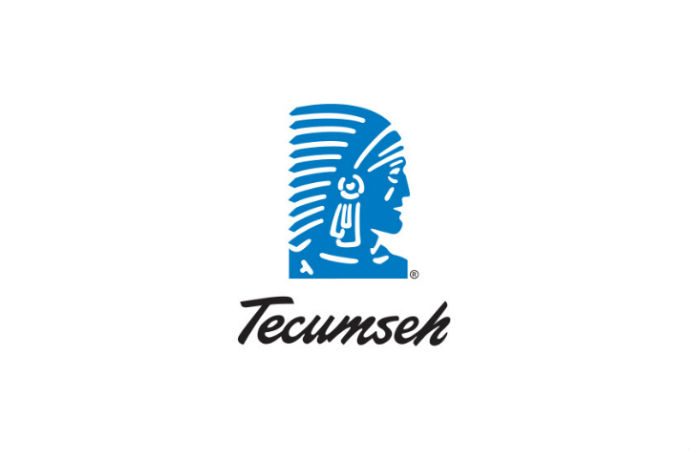With the Department of Energy’s 2017 energy requirements a done deal, and the Environmental Protection Agency’s ruling on delisted HFCs (such as R134a) expected this summer, component makers, OEMs and end users in the U.S. can no longer get around the need for energy-efficient, low-GWP technology incorporating natural refrigerants. That message could be heard up and down the four exhibit halls at NAFEM, which featured 543 exhibitors and more than 18,500 attendees. Here is part one of

The 2015 NAFEM Show, held at the Anaheim Convention Center from 19-21 February, could fairly be described as “a coming out party” for natural refrigerants in the foodservice sector, particularly hydrocarbons (despite their 150-gram/5.3-ounce charge limit).
As it did at the AHR Expo, Carel displayed a new propane-system controller: the Ir33+ Wide for Embraco Fullmotion compressors, a variable-speed compressor. The variable-speed technology combined with the controller generates energy savings of up to 40%.
Fogel’s easily maintained merchandiser
At its NAFEM booth, Guatemalan equipment manufacturer Fogel, and its U.S. distributor Howard McCray, showcased four glass-door R290 (propane) merchandisers. These include two in the “deck” line – with all of the refrigeration technology sequestered at the bottom of the unit – and two in the split line, which houses the evaporator at the top.
The deck merchandisers allow the bottom drawer containing the refrigeration equipment to be easily removed for servicing, replaced by fully functioning equipment. This arrangement calms end users’ fears regarding servicing with a flammable refrigerant.
The main concern with hydrocarbons is service,” said Federico Barquero Tefel, Fogel’s vice president of commercialization. “[End users] don’t want servicing on site with a tank of propane.” The detachable draw allows the technology to be worked on back at the shop in a ventilated area.
This feature has made the deck units more popular than the split units, which have to be removed in their entirety for servicing, said Tefel. However, that popularity may not be long lasting, due to the 12% to 20% upcharge for the deck units.
The service network is just starting to carry refrigerant-grade propane, noted Christopher Scott, president, Howard McCray. “A year ago they didn’t; there was no demand for it. But with the delisting of R134a coming, the drive is on to get R290 in”
Thus far, Roche has been the largest user of the deck glass-door R290 merchandisers in the U.S., with a “couple of hundred” installed in pharmaceutical labs and campus cafeterias, said Scott. Roche, which plans to eliminate R134a from its facilities, will install the split R290 merchandisers as well, he added.
For True, the future is now.
Throughout its booth at NAFEM, True Manufacturing made its transition to propane refrigeration in the U.S. abundantly clear with signs on everything from panels to water bottles that read, “Hydrocarbon Refrigerant: The Future, Now.”
This year it’s all about awareness,” said Todd Washburn, True’s beverage division director. “It’s our coming out party for hydrocarbons in the U.S.”
True, which has marketed propane cooling equipment for years in Europe, makes more than 900 refrigeration models, of which less than half have been designed for R290 use in the US (115 volts/60 hertz). At the NAFEM Show, the company displayed a lineup of glass-door merchandisers, and solid-door refrigerators for restaurant kitchens, accompanied by charts showing the greater efficiency of the R290 units compared to comparable R134A models.
For example, the R134A glass-door merchandising unit GDM-49-HC-LD consumes up to 5.98 KWH/day, while the same R290 model uses no more than 4.21 KWH/day, a 28% reduction, resulting in a $65 (€57) cost savings per year. The R290 units are also UL-certified and meet the most recent Energy Star standard.
The tipping point for R290 adoption in the US occurred last year, when the EPA announced that hydrocarbons, with their low GWP, could be vented to the environment. “That was the last piece of the puzzle” for the R290 service infrastructure that True has put together over the past three years, Washburn said.
True’s customers have included a major beverage manufacturer and a few retail chains that have rolled out R290 front-end multi-beverage merchandisers chainwide, said Washburn, who declined to name the companies without their approval. Target is testing one of the merchandisers in a store in Minneapolis. “Customers are buying them every day,” he added.
Follow-up to AHR Expo
A few exhibitors built upon hydrocarbon products introduced at the AHR Expo last month in Chicago.
For example, Tecumseh Products showcased some of the same hydrocarbon compressors it unveiled including the AK2, AJ2, and TA2 series. The TA2, for example, uses R600a (isobutane) in small commercial refrigeration applications.
Danfoss, fresh from its major exhibit at the AHR Expo, showcased a new liquid line filter drier, the Eliminator, which can be used with hydrocarbon systems. The small, 1.5in3 (25cm3) device is designed for self-contained foodservice applications, preventing moisture, acids or dirt from reaching the expansion device.
Danfoss also showed a microchannel heat exchanger for a condensing unit, which can cut the refrigerant charge by up to 30%, making it ideal for propane’s 150-gram charge limit.
In terms of R290 adoption, the foodservice industry is nearing a tipping point, said John Carmack, Danfoss’s director of sales, North America. One challenge that end users will need to grapple with: building and fire codes. “Some municipalities are less resistant than others,” he said.
As it did at the AHR Expo, Carel displayed a new propane-system controller: the Ir33+ Wide for Embraco Fullmotion compressors, a variable-speed compressor. The variable-speed technology combined with the controller generates energy savings of up to 40%.
Carel also showed a new product at the NAFEM Show – the evd-ice, an electronic expansion valve packaged inside the evaporator serving a walk-in cold room. The system is compatible with a range of natural refrigerants, including hydrocarbons, CO2 and ammonia.
Carel is receiving requests from supermarkets for plug-in units and freezer islands that employ propane technology, said Nicola Virdis, Carel’s business unit manager refrigeration, adding that convenience stores are looking at propane technology “to reduce their energy costs.”
MORE INFORMATION
Related stories






_1490973133.png)
